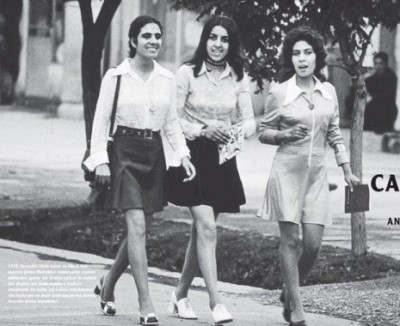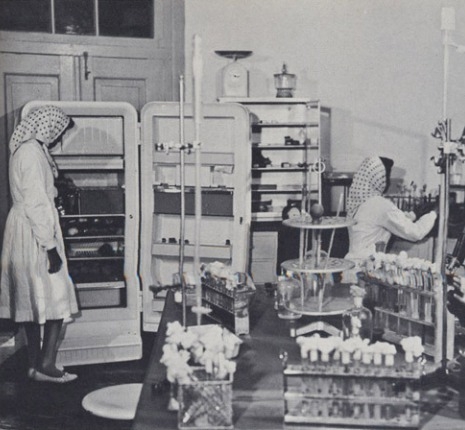Women’s Rights in Afghanistan “Before And After” America’s Criminal Military Agenda

Women’s rights in the Middle East and Central Asia are intimately related to U.S. led “humanitarian wars”.
The derogation of women’s rights in Afghanistan was the direct result of Washington’s diabolical military and intelligence agenda, the intent of which was to transform Afghanistan into an Islamic proxy state.
What the images presented below suggest is that US interventionism was largely geared towards destroying the secular state and at the same token undermining the rights of women.
This was instrumented by closing down public schools and replacing them with koranic schools.
Education in Afghanistan in the years preceding the Soviet-Afghan war was largely secular. The number of CIA sponsored religious schools (madrasahs) increased from 2,500 in 1980 to over 39,000.
USAID generously financed the process of religious indoctrination, largely to secure the demise of secular institutions. Confirmed by the Washington Post:
… AID officials said in interviews that they left the Islamic materials intact because they feared Afghan educators would reject books lacking a strong dose of Muslim thought. The agency removed its logo and any mention of the U.S. government from the religious texts, AID spokeswoman Kathryn Stratos said.
“It’s not AID’s policy to support religious instruction,” Stratos said. “But we went ahead with this project because the primary purpose . . . is to educate children, which is predominantly a secular activity.”
… Published in the dominant Afghan languages of Dari and Pashtun, the textbooks were developed in the early 1980s under an AID grant to the University of Nebraska -Omaha and its Center for Afghanistan Studies. The agency spent $ 51 million on the university’s education programs in Afghanistan from 1984 to 1994.” (Washington Post, 23 March 2002, emphasis added)
Michel Chossudovsky, GR Editor, March 8, 2023
* * *
Afghanistan, Iraq, Libya and Syria have been attacked by the US Empire and its allies.
These countries had something very important in common: They all had secular nationalist sovereign governments with long established ties with the former Soviet Union, which is one of the reasons why the US has long planned to destroy them and turn them into client states.
They had an all inclusive society that respected and protected religious and ethnic minorities and women’s rights. Their economies were necessarily state controlled in order to protect against predatory western corporations that have destroyed and still are destroying national economies around the world in the name of the so-called free trade and open market policies.
After nearly four decades of war, death and destruction, it is now difficult to imagine Afghanistan before its tragic recent history. Up until the so-called “Soviet-Afghan war” which commenced in 1979, the country was indeed a secular country with a nationalist government and long proud history, where people lived their normal lives in peace. Contrary to current perception, women then had access to university education and pursued varied professional careers like their counterparts in any other twentieth century modern country.
Women in Afghanistan were not always under house arrest and forbidden by law to leave their homes unchaperoned by a male relative. Once upon a time in pre-Taliban days Afghan women had access to professional careers, university-level education, shops selling non-traditional clothing, public transportation, and public spaces, all of which they happily navigated freely and without supervision.
According to a US State Department report from the Bureau of Democracy, Human Rights and Labor from 2001:
Prior to the rise of the Taliban, women in Afghanistan were protected under law and increasingly afforded rights in Afghan society. Women received the right to vote in the 1920s; and as early as the 1960s, the Afghan constitution provided for equality for women. There was a mood of tolerance and openness as the country began moving toward democracy.
Women were making important contributions to national development. In 1977, women comprised over 15% of Afghanistan’s highest legislative body. It is estimated that by the early 1990s, 70% of schoolteachers, 50% of government workers and university students, and 40% of doctors in Kabul were women.
Afghan women had been active in humanitarian relief organizations until the Taliban imposed severe restrictions on their ability to work. These professional women provide a pool of talent and expertise that will be needed in the reconstruction of post-Taliban Afghanistan.
Even under Hamid Karzai’s government, with the recently approved Code of Conduct for women, all of the women shown in these photographs, taken in the ‘50s, ‘60s, and early ‘70s, could not be faulted with improper behavior, according to clerics and government officials.

A record store in Kabul

A co-ed biology class at Kabul University

Afghan university students, 1967. Photo credit: Dr. Bill Podlich, Retronaut

Public transporation in Kabul

University students, early 1970s

Women working in one of the labs at the Vaccine Research Center

Mothers and children playing at a city park—without male chaperones

Queen Soraya reigned in Afghanistan with her husband King Amanullah Khan from 1919 to 1929. She would be slut-shamed or worse for wearing this dress in modern Afghanistan.

